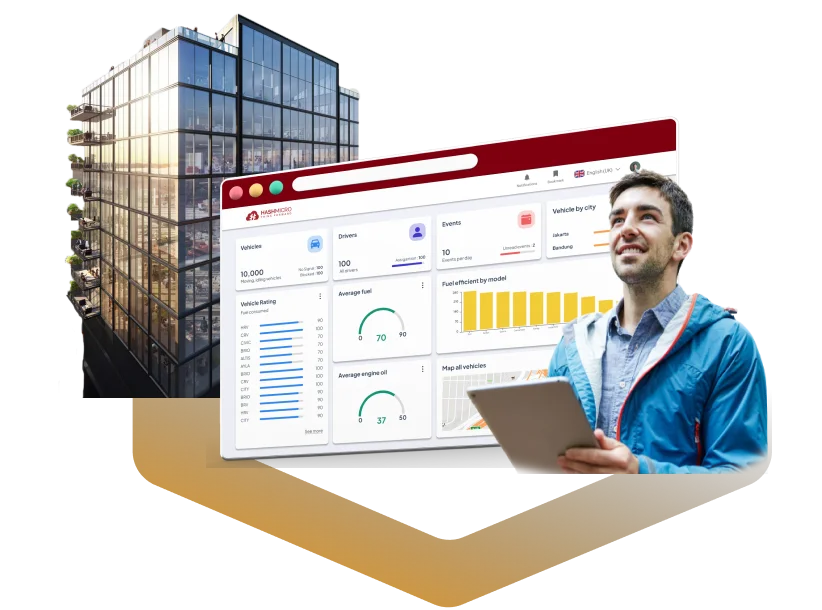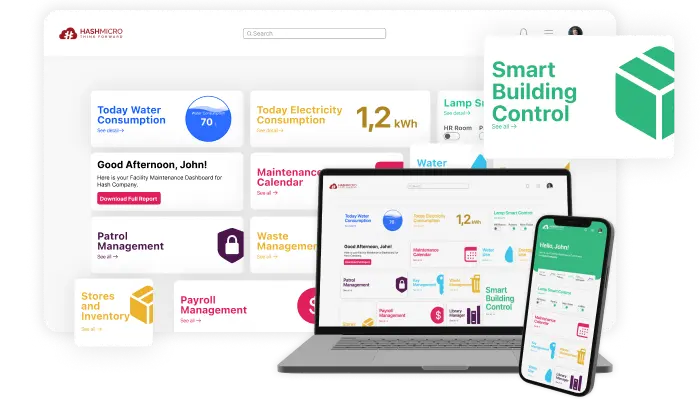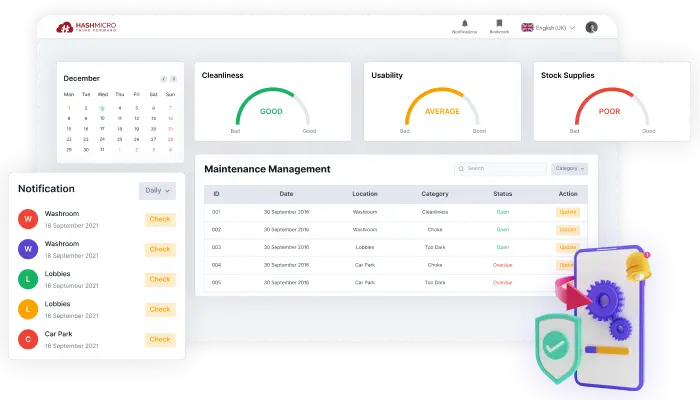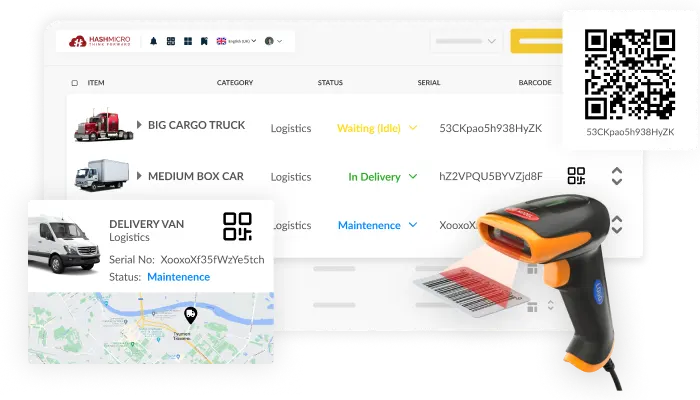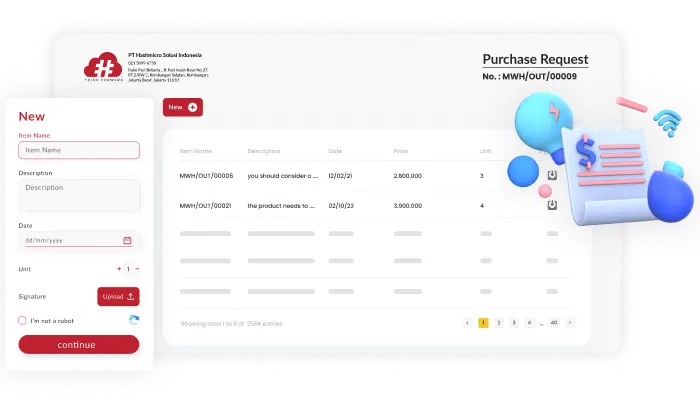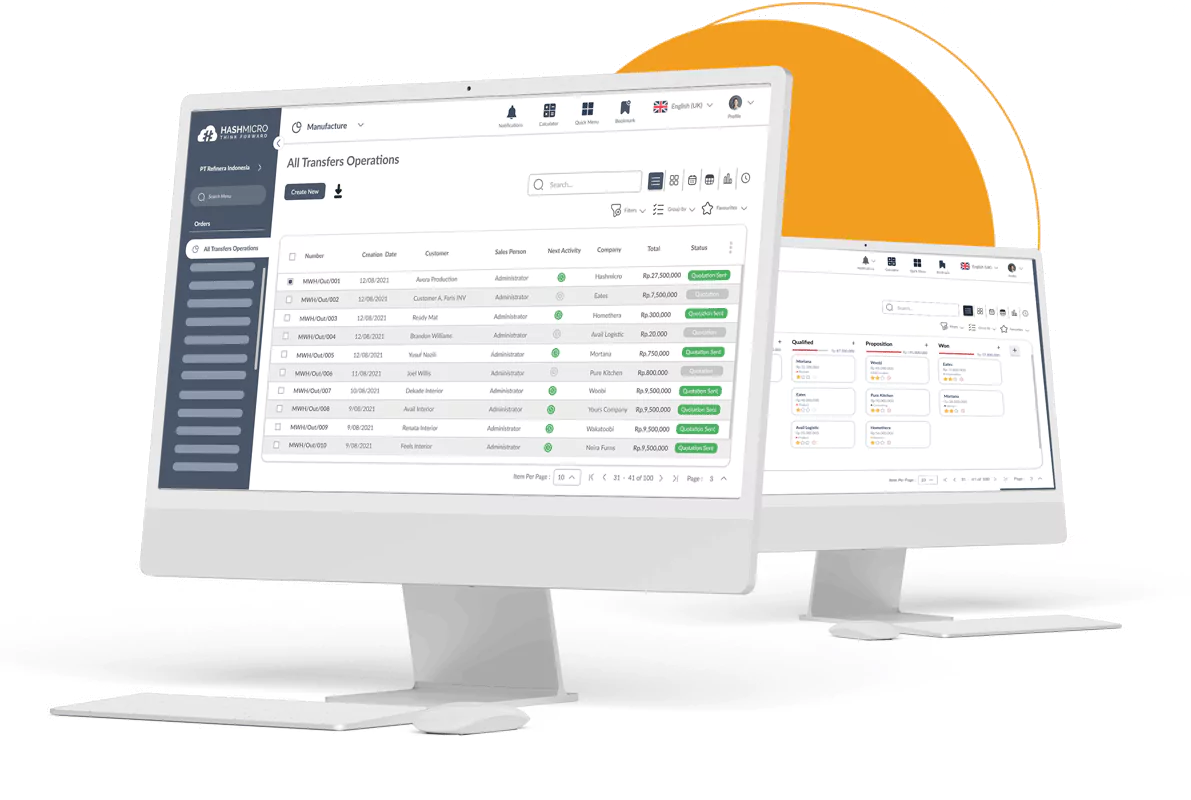What Is HashMicro's Facility Management Software?
HashMicro’s Facility Management System (FMS) is a comprehensive software designed to simplify and optimize the management of buildings, campuses, and other facilities. It provides a centralized platform for managing maintenance, monitoring assets, tracking energy consumption, and overseeing space utilization, ensuring that every aspect of facility operations is well-coordinated.
The system works by automating daily maintenance tasks, integrating data from IoT devices, and providing real-time insights through analytics dashboards. These features enable facility managers to track asset conditions, monitor occupancy levels, and detect inefficiencies before they escalate into costly issues.
Key functions of FMS include maintenance scheduling, asset management, security oversight, and space planning. By leveraging these tools, businesses gain better control over operational efficiency, reduce maintenance costs, extend asset lifespan, and create a safer, more sustainable environment for occupants.
